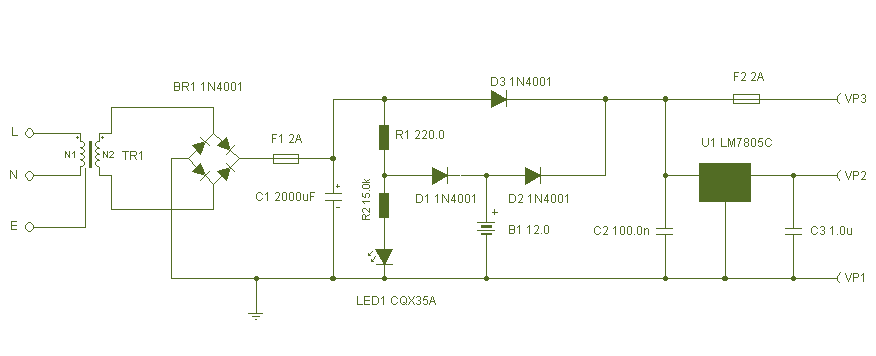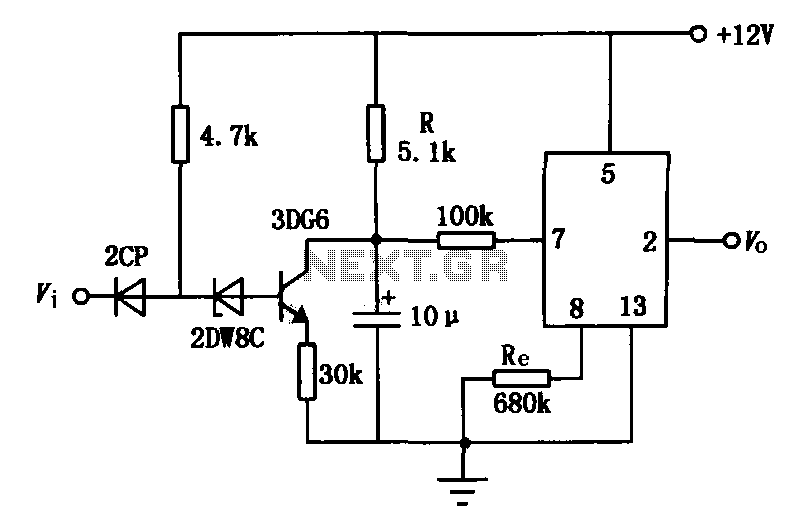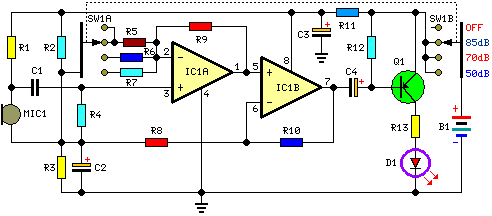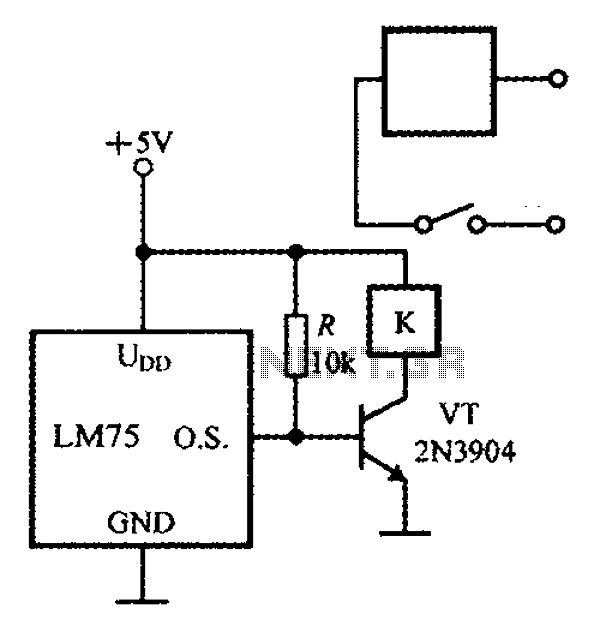
DUM23-48 300II AC power distribution unit electrical schematic diagram
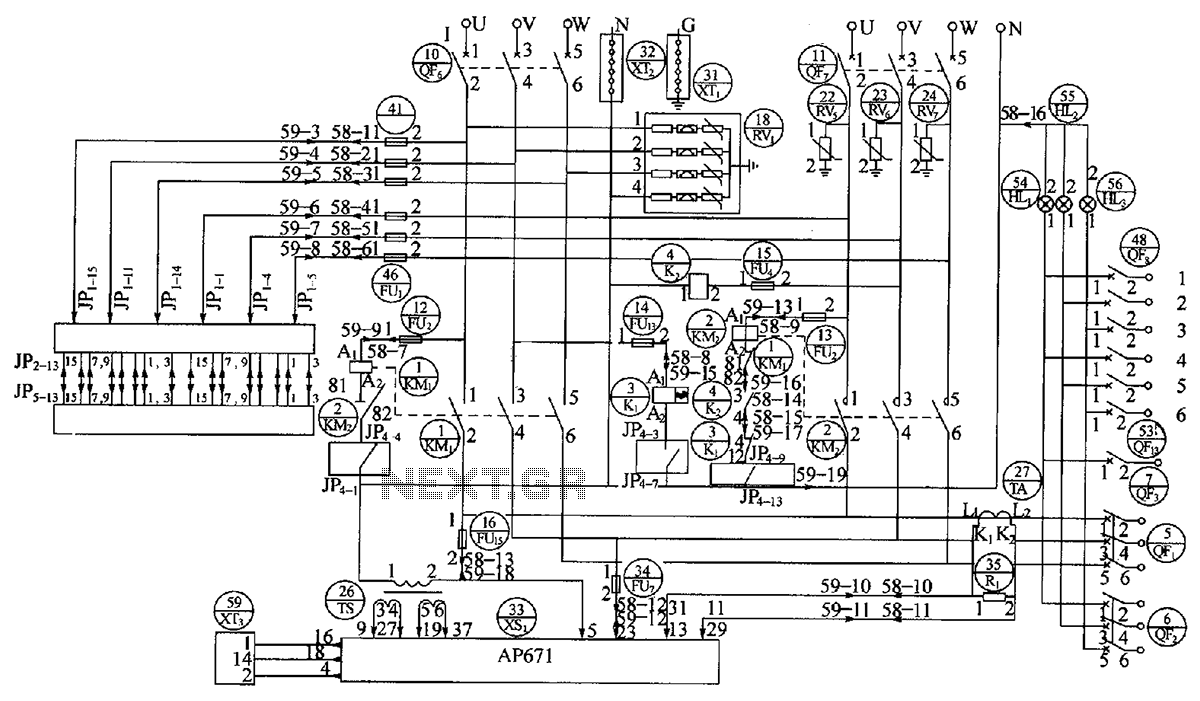
The OBO V20C functions as a lightning protection module, capable of handling a maximum lightning damage current of 40 kA. It includes a relay (k), a contactor (KM), a fuse (FU), and traffic lights (HL).
The OBO V20C lightning protection module is designed to safeguard electrical systems from transient overvoltages caused by lightning strikes. With a maximum lightning damage current rating of 40 kA, this module is suitable for various applications where high levels of surge protection are required.
The module integrates several key components:
- The relay (k) is used for controlling the flow of electrical power based on specific conditions, ensuring that the system can respond effectively to changing electrical states.
- The contactor (KM) serves as a switch that can handle larger currents and voltages, allowing the module to disconnect or connect circuits as needed to prevent damage during a lightning event.
- The fuse (FU) is a critical safety component that protects the circuit by breaking the connection when excessive current flows, thereby preventing potential fires or equipment damage.
- The traffic lights (HL) are utilized for signaling purposes, providing visual indicators for the operational status of the system, which is essential for user awareness and safety.
Incorporating these elements, the OBO V20C not only provides robust lightning protection but also enhances the overall safety and reliability of the electrical installation. Proper integration of this module into a circuit design can significantly reduce the risk of lightning-induced damage, making it an essential component in environments prone to thunderstorms. As shown, OBO V20C as lightning protection module, lightning damage maximum current of 40kA; k relay; KM for the contactor; FU for the fuse; HL traffic lights.
The OBO V20C lightning protection module is designed to safeguard electrical systems from transient overvoltages caused by lightning strikes. With a maximum lightning damage current rating of 40 kA, this module is suitable for various applications where high levels of surge protection are required.
The module integrates several key components:
- The relay (k) is used for controlling the flow of electrical power based on specific conditions, ensuring that the system can respond effectively to changing electrical states.
- The contactor (KM) serves as a switch that can handle larger currents and voltages, allowing the module to disconnect or connect circuits as needed to prevent damage during a lightning event.
- The fuse (FU) is a critical safety component that protects the circuit by breaking the connection when excessive current flows, thereby preventing potential fires or equipment damage.
- The traffic lights (HL) are utilized for signaling purposes, providing visual indicators for the operational status of the system, which is essential for user awareness and safety.
Incorporating these elements, the OBO V20C not only provides robust lightning protection but also enhances the overall safety and reliability of the electrical installation. Proper integration of this module into a circuit design can significantly reduce the risk of lightning-induced damage, making it an essential component in environments prone to thunderstorms. As shown, OBO V20C as lightning protection module, lightning damage maximum current of 40kA; k relay; KM for the contactor; FU for the fuse; HL traffic lights.
